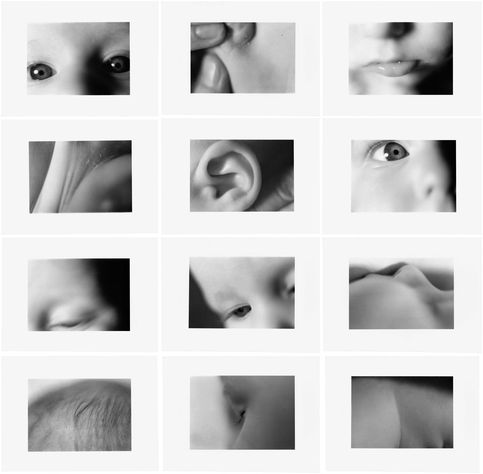Primapara, Bathing Series

Mary Kelly
Primapara, Bathing Series, 1974/1996
12 black-and-white photographs Gelatin silver on baryta paper (prints 1996) 12.7 x 18 cm each, framed 22 x 26.7 cm each Edition 2/3
GF0001977.00.0-1998
Artwork text
In the context of the history of the origins of Post- Partum Document, the two series of small-format photographs entitled Primapara, Bathing Series, and Primapara, Manicure/Pedicure Series from 1974 occupy a prominent position. As may be gleaned from Rozsika Parker’s review of the Exhibition at the Arts Meeting Place at the Women’s Workshop of the Artists Union,(1) the original title of Mary Kelly’s comprehensive project, in which she documents the processes of pregnancy, birth and childcare, was to be Primapara, i. e., the medical designation for first-time mothers. “Primapara is the attempt to document my first experience of pregnancy, childbirth, and childcare. The Post-Partum section includes records of childcare tasks, i. e., actual corporal evidence as well as written and photographic material.” The exhibition and the review in a 1974 issue of Spare Rib magazine also provide us with direct insights into the process of developing a project as extensive as the Post-Partum Document. At the same time, by having its title altered, the overall project was given another time frame, reducing only the period following the birth itself and the diversity of the media employed. By dropping the photographic documentation from the PPD project, which kept her occupied for several years, Kelly reflects an artistic evolution where she undertook a critical examination of the possibilities of photographic documentation, and finally eliminated it from the PPD. It was thanks to the re-awakened interest in the completed Post-Partum Document that Mary Kelly’s all-embracing involvement with questions of pregnancy, childbirth, and childcare was brought to light again, which ultimately led to the publication of a more comprehensive edition of both series in 1996. The original vintage prints are held in the artist’s own archives. Yet again it was only through the exhibition at the Generali Foundation in 1998 that a further segment of this overall investigation, a super 8 film on the theme of pregnancy entitled Antepartum, was made available. In both of the series of small-format b/w photographs, the visual and physical contact between mother and infant is captured, thus reflecting the complex relationship between mother and child. By sticking to a myopic and closely-cropped reproduction scheme, the artist re-creates an infant-like perspective, as though from the child to the mother, reflecting, in this way, the as yet integral unit of mother and child during the first few months of life. The oscillation inherent in these pictorial works between intimacy and aggressiveness (e. g., the nail clippers) introduces a quality rich in tensions, which lies well beyond the usual representational schemes found in infant photography. (Hemma Schmutz) 1 Rozsika Parker, “Exhibition at the Arts Meeting Place,” in: Spare Rib, 1974, No. 29 | pp. 37-40. reproduced in: Rozsika Parker and Griselda Pollock: Framing Feminism. Art and the Women’s Movement 1970-1985, Pandora Press, Routledge & Kegan Paul, London 1987, pp. 158-62.












